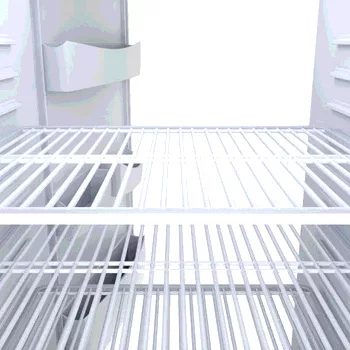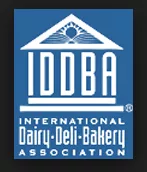Refrigerant Leak Detection Programs Offer Multiple Benefits for Food Retailers

Managing the refrigerant in commercial refrigeration systems is important from an environmental, regulatory and financial perspective. Refrigerant leaks are caused by a number of factors and can occur in any system. For food retail facilities, the majority of leaks happen in refrigeration racks and cases. Investing in an effective leak detection program can help retailers to minimize and even eliminate costly refrigerant leaks altogether, ultimately improving store operations.
The Broad Impact of Refrigerant Leaks
According to the U.S. Environmental Protection Agency’s (EPA’s) GreenChill research, the average U.S. supermarket leaks an estimated 25 percent of its refrigerant supply per year. For an individual store, the loss of R-404A (common refrigerant) at $7 per pound would cause a single supermarket to lose about $6,125 annually to refrigerant leaks. Multiply that by 100 stores in a chain and the retailer could lose more than $600,000 annually. This estimate does not factor in additional costs, such as the associated labor fees, potential loss of business from the service disruption of fixing a leak and food loss or quality issues that could result.
Leaks can cause refrigeration systems to work harder in order to compensate for the refrigerant lost, resulting in lower performing equipment or inefficient energy use. For systems working to keep foods at the proper temperatures to maintain freshness and safety standards, severe refrigerant leaks can also negatively affect food quality.
As most commonly used refrigerants today are greenhouse gases (some are ozone-depleting substances), there is a growing consumer and regulatory focus on minimizing the environmental effects of refrigerant leaks.
Regulations like the EPA’s proposed update to Section 608 of the Clean Air Act and the California Air Resources Board are addressing refrigerant leaks. We know that the EPA is serious about enforcement of its regulations around leak identification and proper repair of equipment. Effective leak detection programs can help retailers to manage and correctly repair refrigerant leaks in order to avoid costly EPA fines.
Leak Detection Methods
 Remote leak detection programs are based on harnessing the power of machine learning technologies to continuously monitor system refrigerant levels and notify stakeholders when there is a deviation compared to normal operating conditions. Unlike “sniffing” leak detection methods, which can only monitor parts of the refrigeration systems that are located in closed areas, remote leak detection monitors the complete system, analyzing key indicators that help provide actionable insights.
Remote leak detection programs are based on harnessing the power of machine learning technologies to continuously monitor system refrigerant levels and notify stakeholders when there is a deviation compared to normal operating conditions. Unlike “sniffing” leak detection methods, which can only monitor parts of the refrigeration systems that are located in closed areas, remote leak detection monitors the complete system, analyzing key indicators that help provide actionable insights.
Best Practices for Effective Leak Detection
Retailers should aim to implement a zero-tolerance policy for refrigerant leaks. The goal should be not only to create proper response protocols, but also to incorporate proactive measures that minimize or eliminate leaks altogether.
Communication throughout the retail organization is also key. To maximize the effectiveness of leak detection programs, retailers should clearly communicate the importance of reducing leaks to all relevant parties, including their heating, ventilation, air conditioning and refrigeration contractors.
Looking for quick answers on food safety topics?
Try Ask FSM, our new smart AI search tool.
Ask FSM →
When establishing a leak detection program, three key areas should be addressed:
- Detection methods: There are different technologies to choose from, but the program strategy should begin with detection. Depending on the retailer’s requirements, automatic leak detection equipment can provide early detection of leaks and help identify the location. Automated systems reduce the potential for error with manual inspections and increase process efficiency. Consider installing devices in racks, condensers and cases, which are the most common areas to produce leaks.
- Reliable notifications: When a refrigerant leak occurs, it’s critical that the appropriate people are alerted. Alarm notifications can be remote, local or a combination of both. For time efficiency and increased visibility of refrigeration system performance, many retailers integrate remote leak detection notifications into their facility management system, which can alert a service technician directly or route through a remote monitoring center whose experts can triage, diagnose and resolve the issue.
- Continuous monitoring: Although this element can often be overlooked, continuous monitoring is important to help retailers identify problem areas and understand the overall impact of refrigerant leaks. Through recording and analysis of the data collected at the time a leak occurs, retailers can correlate that information with equipment types or maintenance events to determine the best course of action. Ongoing equipment monitoring offers valuable insights to continually improve the leak detection program, as well as assist in increasing operational efficiency.
Implementing a Leak Detection Pilot Program
As refrigerant leaks are an increasing industry concern, forward-thinking grocers are seeking strategies to limit leaks, reduce negative environmental impacts and avoid costly fines. One prominent U.S. supermarket chain recently incorporated a leak detection pilot program as a key component to its corporate sustainability initiatives.
To capture key equipment performance data across the supermarket chain of 100 stores, a refrigeration management controller was installed at each location. The key data points collected to evaluate the refrigerant levels included ambient temperatures, discharge pressures, liquid refrigerant levels and times of day. Smart fault detection algorithms established models for normal refrigerant levels in various operating conditions, and the data were processed through cloud-based analysis from the retailer’s remote monitoring partner.
When the system detected a deviation from the expected refrigerant level, a notification reported the anomaly, and depending on the degree, a warning or alarm was issued to the monitoring center where experts triaged the advisory. As appropriate, the retailer was notified and given additional information about the equipment and potential resolution steps. Critical situations that required immediate attention were routed directly to the grocer’s contractor to perform onsite validation and repairs.
Real Results from a Supermarket Retailer
After one year of participating in the leak detection pilot program, the prominent supermarket chain had reduced its refrigerant leaks by 25 percent, dropping its overall leak rate to less than half of the industry average. With each store’s average refrigerant charge of 2,000 pounds, this reduction resulted in $560 savings annually in reclaimed refrigerant per store, equaling $56,000 for the 100-store network included in the pilot.
Overall, the grocer calculated that it would achieve return on the investment in significantly less than 24 months—the benchmark they had originally set for success.
In addition, the retailer also discovered that its existing refrigerant levels were marginally low, causing more work for their refrigeration systems, which was creating worn down equipment and resulting in inefficient energy usage. By adjusting to optimum refrigerant levels, the grocer was able to improve overall refrigeration unit performance, reduce energy consumption and better manage safe food temperatures.
Because of the operational, financial and environmental benefits achieved through the leak detection pilot program, the supermarket retailer opted to extend its contract and expand this service beyond its network of 100 stores.
James Mitchell is a product manager for ProAct Enterprise Software and Services for Emerson Retail Solutions. Responsible for energy and maintenance applications and services, James has more than 20 years of industry experience with various retail customers on facility HVACR, energy and maintenance solutions.








